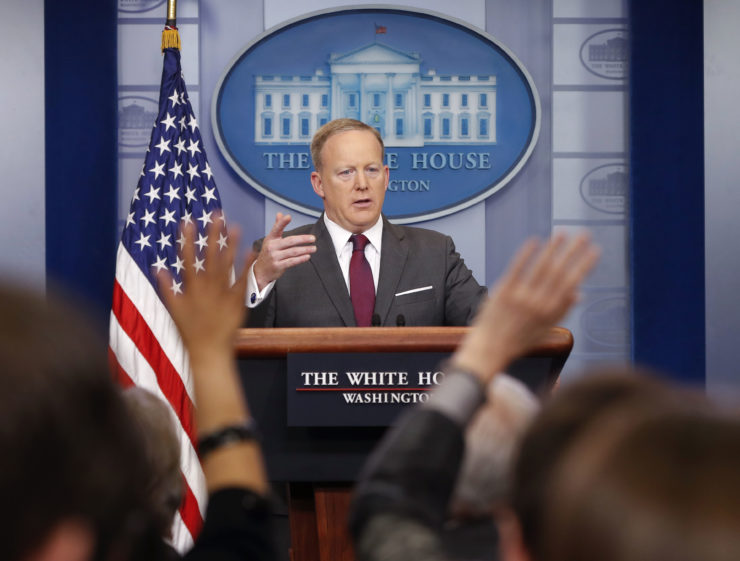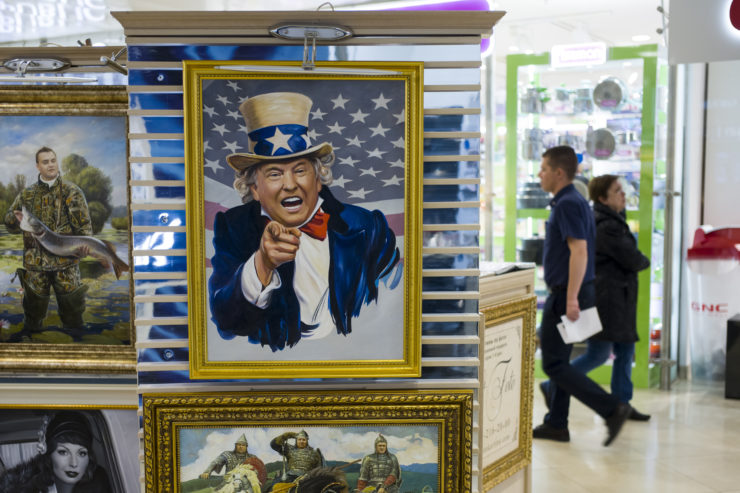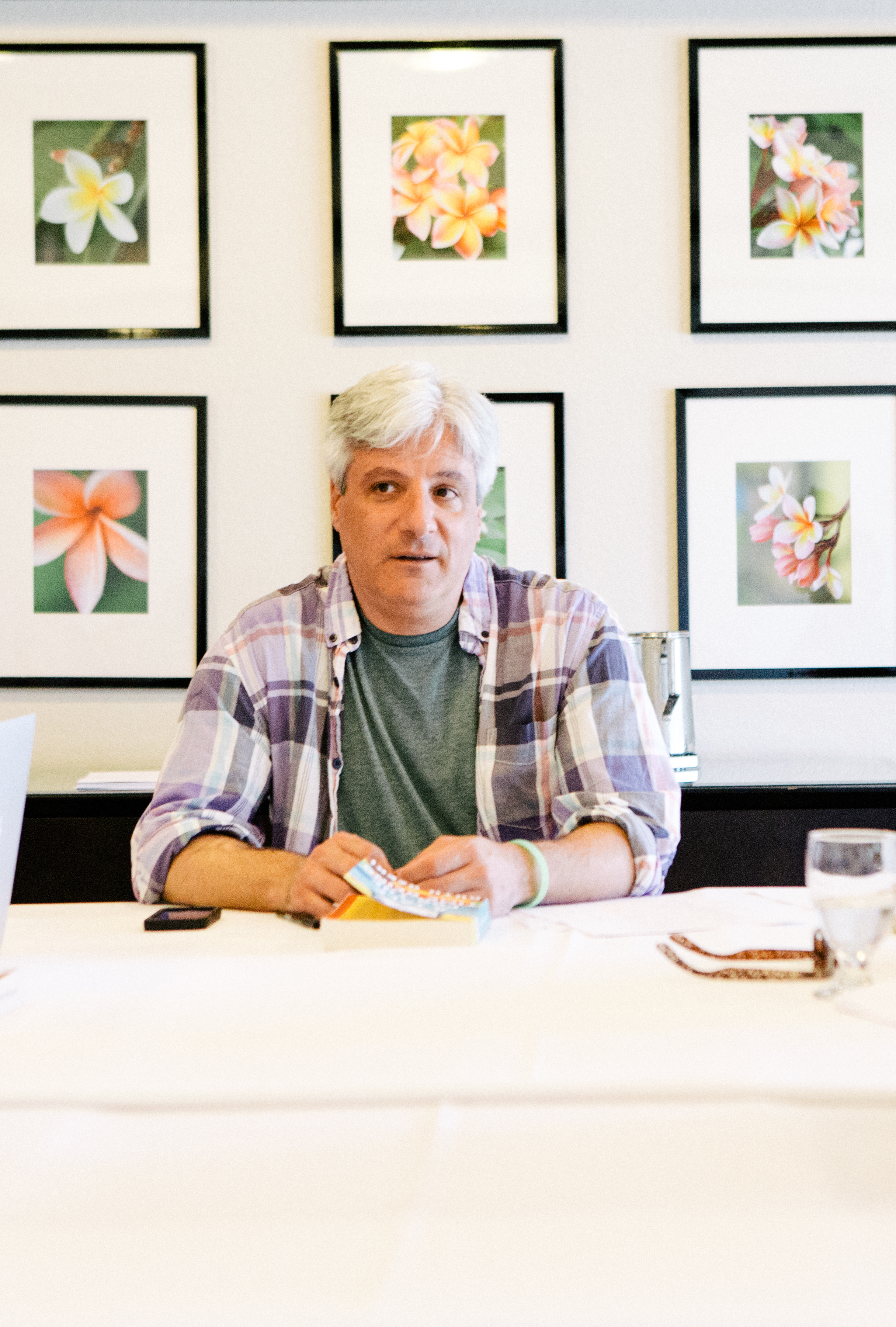
Members of the media raise their hands as White House Press secretary Sean Spicer answers questions.
A decade or so ago, shortly after I became book editor of the Los Angeles Times, I wrote a piece defending the liberties of memoirists. This was in the wake of the scandal over James Frey and his memoir “A Million Little Pieces,” which was debunked after it was selected for Oprah’s Book Club. Frey lied about nearly everything, including a train accident and the amount of time he’d spent in jail. And yet, what of the readers who had been legitimately moved by his confession, false or otherwise? Conventional wisdom called them suckers, conned into believing something they shouldn’t have. I, however, thought — and still think — that the issue was more complex.
I am looking for authority, intelligence, information. The last thing I am after is someone to tell me what to think.
Imaginative reconstruction has long been a tool of narrative nonfiction: Look at Annie Dillard’s Pulitzer Prize-winning “Pilgrim at Tinker Creek,” which, she later admitted, opens with a recollection she had lifted from a graduate student, who had given her permission to write it as if it had happened to her.
We live now in a different era, in which our attitudes on truth and nonfiction have grown more atomized. In the aftermath of the 2016 election — during which propaganda sites by the thousands were deployed as political weapons — everyone keeps talking about fake news. The president uses the term to excoriate those who call him on his lies. Late last month, in a televised interview with CBS’ John Dickerson, he referred to “the fake media … which is what we call the mainstream media”; it’s become a standard insult of his administration.
The Fake Media is working overtime today!
— Donald J. Trump (@realDonaldTrump) May 12, 2017
Faced with that, what do we do about the licenses taken in pursuit of narrative, or the divide between facts and truth?
I’m not trying to be glib, and I don’t think such distinctions are semantic, or (for that matter) easily resolved. Throughout my writing life, I’ve straddled the loose line between them, as a journalist on the one hand, and as an essayist on the other.
As a journalist, I learned to follow a story, to let one source or subject lead me to another, to allow my conclusions, such as they were, to emerge from the information I uncovered.
But as an essayist, I’ve come to recognize the subjectivity of everything, the fallacy of facts as consolation, or window on the truth. What is truth, anyway, and how do we perceive it? This question sits at the center of every essay I write. I think of David Byrne: “Facts don’t come with a point-of-view / facts don’t do what I want them to.” More glibness, perhaps, but is it really? I don’t believe in truth, let me come out and say it, but at the same time, I want to ask you, point me toward a journalist who does.
“All journalism,” Michael Rosenwald argued recently in the Columbia Journalism Review, “is a kind of fiction. The writer gets to choose what to put in and what to leave out, shaping the story in different ways than another writer would, even after witnessing the same events. The transaction between the writer and reader consists of an implicit trust that the writer will deliver a reasonable facsimile of people and events.”

People walk past a caricature of President Trump on sale in a Moscow mall.
Yes, yes, I want to cheer; this is what we do. Take that Rosenwald quote: It’s accurate, but I’ve also trimmed the last eight words of the passage — not for clarity so much as for style. The intercession of the writer again, which is what we’re always facing, no matter what we read. When I think of truth and fake news, and what a writer owes a reader, perhaps the only thing we have to offer is this level of honesty.
Why is fake news so successful? Not least because it supports the preconceptions of its audience. We don’t have to think or be confronted; all we have to do is be affirmed. This is true on both sides of the ideological divide, from PoliticusUSA and the Raw Story to Breitbart and the Daily Caller; there is no right-wing monopoly on willful ignorance. Still, what is journalism’s purpose if not to inform us, and in so doing stir us out of our complacency?
The same, I want to say, is the intention of the essayist, who asks questions that cannot be answered, who embraces complexity. This is a difficult world, and I don’t mean only in regard to policy, although many mornings, my news feed is too much to bear. It’s a difficult world in which to be human, in which to try to live with integrity. That’s what they’re counting on, the purveyors of fake news sites, the politicians pushing a health-care plan that will strip coverage from tens of millions of Americans. It’s not the facts that frighten them; facts, we all know, can be spun. It’s the inquiry. Part of the goal, then, is to shut down the discourse, to appeal to our emotions, rather than our minds. The more we feel, the less we think, the better. That’s not a conspiracy theory, but simply circumstance.
Earlier this year, I participated in a conference at UC Irvine called the Future of Truth that sought to untangle some of these conflicting threads. Part of the discussion revolved around Joseph Mitchell, that magnificent observer, who in the 1940s and 1950s wrote many pieces for The New Yorker that relied on composites. In his 2015 biography of Mitchell, “Man in Profile,” Thomas Kunkel catalogues these lapses, raising questions about his subject’s practices. Mitchell once seemed to walk the border between journalism and essays with fluid grace — except that now we’re questioning his legacy. For me, the resolution here is simple: Do we trust him or do we not?
“All journalism is a kind of fiction. The writer gets to choose what to put in and what to leave out, shaping the story in different ways than another writer would, even after witnessing the same events. The transaction between the writer and reader consists of an implicit trust that the writer will deliver a reasonable facsimile of people and events.”
This is what Rosenwald was writing about, the questions raised by Mitchell’s work. And yet, these are the same questions, I’d suggest, that all journalism must provoke. As a journalist, I don’t invent or conflate, although I shape or even draw conclusions, depending on the type of piece I’m working on. As an essayist, conflation, or reinvention, is unavoidable because often I’m writing about memory, or personal experience, which is an inherently subjective territory. It’s important to know the difference between these impulses, but also to recognize what happens when they collide. In either instance, I am looking for authority, intelligence, information. The last thing I am after is someone to tell me what to think.
“It has been demonstrated,” Walter Lippmann wrote in 1922, “that we cannot rely upon intuition, conscience, or the accidents of casual opinion if we are to deal with the world beyond our reach.” He’s right, of course, especially when it comes to that third category; just look at any front page, real or virtual, to see where casual opinion has led. As for the rest of it, it’s an open question, and as such, difficult to pin down. Intuition leads us to ask unexpected questions, while conscience sits at the heart of the entire journalistic enterprise. Indeed, at this point, the two of them together seem to make for the most essential sort of common ground.


